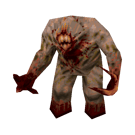Anyone have a C++ explanation/tutorial/whatever else for someone like me who is an artist that pretty much only knows very basic C# and Angel Script? I want to do some VERY minor mods to the engine and in order to do that I need to be able to understand what it is I’m doing.
C++ explained for the idiot?


It’s like C# with
unsafe
100% of the time. You’ll need to get used to having to use both
.
and
->
depending on how something was allocated and depending on what you’re working with. Access control (protected private) is
sticky
instead of attached to each declaration and you’ve now got the joy of header files.
If you’re using a new version of VS with the type search (default CTRL+T) that super helpful to new people and people new to a project - lets you easily track anything down by name.
What are the minor mods you’re looking to do?

Not sure it really counts as a modification, but I’m wanting to make a character controller component and also add Ambient Occlusion to the renderer (pretty sure that would really be a shader though).

I’ve made an angel script character controller but I want to see if I can do it with C++ and make something more streamlined.

I’ve made an angel script character controller but I want to see if I can do it with C++ and make something more streamlined.
There are also C++ examples that are mostly all implemented to match the general structure of the angelscript/lua examples. Those should be useful for you to be able to reference what something in angelscript looks like in C++ for first porting (then improving) your AS controller to C++.
I believe there’s a version of the NinjaSnowWar demo rewritten in C++ floating around somewhere that you might be able to track down, that should be similar to the examples as well.
Edit: Ninja snow war C++ is over in this thread , it does look to be a little behind the times though.
Unfortunately you have to pretty much just muscle through, read a few C++ crash courses (if you can find any you can stand to read, most I’ve seen are terrible), and ask when you’re jammed up.
add Ambient Occlusion to the renderer (pretty sure that would really be a shader though).
Yes, that’s a shader (unless wanting bent-normals from vertex data - not likely you want that though).